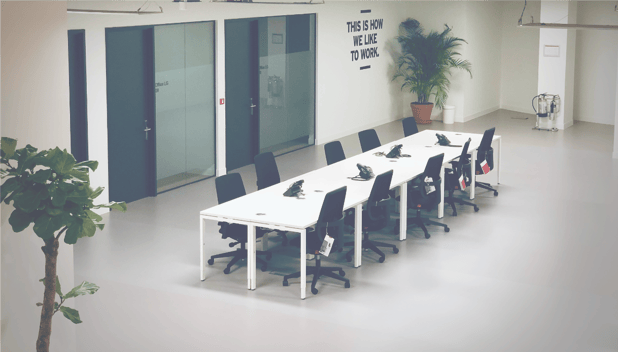How COVID-19 is changing the workplace
COVID-19 has had a huge impact on nearly every aspect of our lives. One key area that has been drastically affected is the way in which we work. Across the world, millions of office workers have been required to stay at home and work remotely.
However, in the UK, despite advice to work from home where possible, office workers are eager to get back into the swing of things and are returning to their workplaces. Our Occupancy Index shows that during the first lockdown in spring last year, an average of only 8% of office-workers were commuting, but this increased to about 18% this January.
So what does this mean? Our data suggests that remote working is untenable in the long run. And it seems increasingly likely that the pandemic will prove to be a major tipping point for the digital transformation of the workplace.
The positive impacts of working from home
Many organisations have been forced to improve their online resources and their employees’ digital capability. While there’s been a slow shift towards flexible working over the past years, working from home has now become essential to the success of many companies.
Companies are re-evaluating the way in which their employees work, and this has the potential to bring benefits to both employers and employees going forwards.
One of the greatest benefits for employers is undoubtedly the potential for huge cost savings. The average cost of a single desk space in Central London is £11,400 per annum. By reducing the number of staff working in the office at any given time, companies will be able to downsize, providing a significant accretion on their bottom line.
Embracing a hybrid workplace strategy is also likely to increase talent attraction and retention. Offering remote working options can reduce geographical limitations, increase your talent pool, and give employees much more flexibility.

The challenges of remote working
This isn’t to say that working from home doesn’t bring a range of challenges. Corporate networks have been experiencing issues as they’re not used to having the majority of their connections coming in over virtual private networks (VPNs). And due to so many people spending time at home, internet service providers (ISPs) have experienced a drastic surge in usage, with Vodafone reporting a 50% increase.

That said, COVID-19 has clearly prompted an extreme version of remote working, as people have been forced not only to work at home, but to stay at home where possible. This will have undoubtedly exacerbated feelings of isolation, anxiety, frustration, and boredom.
Once restrictions are fully lifted, companies can find a more balanced approach, with a shift to a more flexible style of working that benefits both employers and employees.
The return to work
While companies will be keen to return to work as quickly as possible, it will be essential to manage this effectively. Installing sensors to monitor occupancy levels in offices can provide valuable data about how much space is really needed. Patterns that emerge over time can reveal average utilisation levels and highlight specific areas that are underused.

Occupancy monitoring will also be able to support the management of new regulatory requirements that may be implemented as a result of COVID-19. It seems inevitable that some degree of social distancing will remain in place when staff return to their offices.
This means that real-time occupancy data will no longer be a luxury, but a necessity in order to uphold an effective social distancing policy. Sensor technology can accurately track key factors including real-time people count, density in a given area, distance between occupants and movement between zones. Real-time alerts can then be used to manage the flow of staff, ensuring that social distancing regulations are complied with.
What will the future of the workplace be?
Although it’s hard to predict exactly what the workplace will look like in the wake of COVID-19, it seems increasingly likely that it will not revert to its previous model.
Companies have been forced to embrace remote working at its most extreme level, and this will have paved the way for more flexible workplace strategies going forwards. It’s also clear that new steps will need to be taken in order to protect the health and wellbeing of employees. Following this pandemic, the office we return to will undoubtedly become somewhat different to the one we left nearly a year ago.
Contact us or download our solution for help on managing your return to work effectively.




